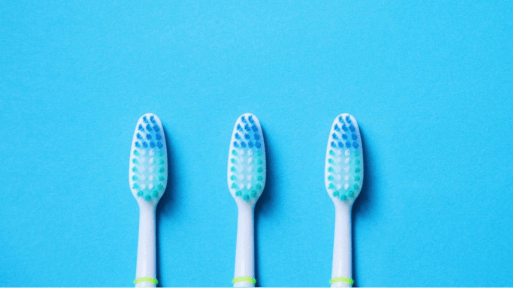How to Tell if You Need Dentures
 Did you know dentures aren’t just for senior citizens? In fact, a recent survey showed that about 20 million women above 40 years use partial or full dentures, and the number is expected to continue to rise. Is it time for you to get dentures? Here are a few telltale signs.
Did you know dentures aren’t just for senior citizens? In fact, a recent survey showed that about 20 million women above 40 years use partial or full dentures, and the number is expected to continue to rise. Is it time for you to get dentures? Here are a few telltale signs.
You have missing teeth
Dentures can improve the appearance of your smile. You may need either full or partial dentures, based on your circumstances. A partial denture is used when one or more teeth remain in the upper or lower jaw. Complete dentures, also called full dentures, are used when all the teeth are missing. If you’ve lost teeth due to injury, a partial denture can help prevent your remaining healthy teeth from shifting into the gap.
You have chewing difficulties
Missing teeth can keep you from enjoying your favorite foods (and all the new foods you haven’t tried yet). With dentures in place, you will be able to eat your favorite dishes in comfort once again.
You have speech problems
Our teeth play an important role in speech. Mumbled and slurred speech are big problems for people with missing teeth—an issue that can be solved with dentures.
You look older than you are
Missing teeth can make people look older than they really are. Dentures rejuvenate your smile with a youthful, natural appearance.
Schedule Your Appointment Today
Is it time you got your smile and confidence back with dentures? Not sure if you need them yet? Schedule an appointment today and we’ll be happy to answer any questions you have.
Do You Really Need to Brush Your Tongue?
 Our tongues are made up of tons of tiny bumps called papillae, which create peaks and valleys and give bacteria the perfect place to hide. If these bacteria aren’t removed, you may experience some unwanted side effects.
Our tongues are made up of tons of tiny bumps called papillae, which create peaks and valleys and give bacteria the perfect place to hide. If these bacteria aren’t removed, you may experience some unwanted side effects.
What happens if you don’t brush your tongue?
Bad Breath – One of the most common side effects of not brushing your tongue is bad breath. While bad breath can be caused by a lot of different things, an unclean tongue can be to blame.
Oral Thrush – This occurs when the range of bacteria in your mouth exceeds normal levels and naturally occurring yeast grows out of control.
Decreased Sense of Taste – When a tongue is not properly cared for, bacteria can coat your taste buds and decrease your sense of taste. Your favorite foods won’t have the same delicious flavor they used to.
Gum Disease – When tongue bacteria moves to the teeth, it can cause decay and, if left untreated, can progress into gum disease.
Periodontal Disease – Because bacteria buildup on your tongue can spread to your teeth and gums, it increases the likelihood of gingivitis. If left untreated, the inflammation can advance to periodontal disease, which occurs when the gums pull away from the teeth and the space in between becomes infected.
How Do You Clean Your Tongue?
First off, let’s talk about how often you should brush your tongue: every time you brush your teeth. A gentle brushing from the back of the tongue to the front and from side-to-side will do just fine—you don’t need to, and shouldn’t, brush hard. If you have a sensitive gag reflex, try using a tongue scraper instead of a toothbrush.
Schedule Your Appointment Today
Ready for a healthy, happy smile? Schedule an appointment today.
Top 3 Tech Gadgets for Healthy Oral Hygiene
 From apps that track your brushing habits to game-centric toothbrushes for kids, technology is shaping the way we take care of our oral hygiene. Here are three tech gadgets that can shine a fun light on oral care by embracing new dental technology.
From apps that track your brushing habits to game-centric toothbrushes for kids, technology is shaping the way we take care of our oral hygiene. Here are three tech gadgets that can shine a fun light on oral care by embracing new dental technology.
This toothbrush’s three-year warranty and ADA seal of approval really make it an ideal choice for someone looking for an all-in-one quality toothbrush and floss combo. There are three different modes, including a brushing mode, flossing mode, and brushing + flossing mode. Now the only reason you can tell your dentist you skipped brushing and flossing is if you don’t have adequate counter space.
The Sonic Fusion has an easily refillable water reservoir, and the device offers 10 different water pressure settings. If you have a son or daughter with braces, this gadget is a must-have.
The Reusable Zero-Waste Dental Pick
Durapik floss picks are saving our oceans and helping us floss our teeth at the same time. With these floss picks, you don’t have to worry about getting your hands dirty. This biodegradable floss is great for the environment and is dishwasher safe.
5 Quick Tips for a Brighter Smile
 Everyone wants a bright, white smile, right? A glowing smile can boost your confidence, but most people also want coffee, tea, wine, and soda—all things that stain our teeth and make the dream of a healthy white smile seem out of reach. But fear not, because we’ve got five quick tips for a brighter smile.
Everyone wants a bright, white smile, right? A glowing smile can boost your confidence, but most people also want coffee, tea, wine, and soda—all things that stain our teeth and make the dream of a healthy white smile seem out of reach. But fear not, because we’ve got five quick tips for a brighter smile.
Get a Better Toothbrush
Using soft bristles does a lot more for your teeth than a toothbrush with hard bristles. Take your hygiene a step further with an electric toothbrush. It can greatly increase the impact that brushing has on your dental health.
Eat Healthier Foods
Eating healthy doesn’t only benefit your body, it also contributes to better oral health. Foods rich in vitamins and minerals help strengthen teeth and prevent diseases.
Brush More Often
One of the most prominent sources of discolored teeth is the food you eat. Coffee, processed foods, and candy can all stain your teeth and damage your enamel, revealing the naturally yellowish dentin. Brushing after you eat can help scrub the stains away.
Treat Issues Immediately
As soon as you begin feeling a toothache, or any kind of pain in your mouth, request an appointment with us immediately.
Schedule Regular Dental Appointments
Consistent, twice-a-year cleanings not only leave your mouth feeling its best, they also offer long-term health benefits and can save you lots of money in the long run. Schedule an appointment today and our team will get you on your way to a happier, healthier smile.
What is Dental Bonding?
 Dental bonding is performed to restore the natural shape of a tooth using a composite resin that matches the tooth’s color. Whether the tooth is misshapen due to accidental damage or discoloration, bonding can be an inexpensive way to restore the tooth to its original shape and natural color. The bonding procedure is usually quick and can be done in one visit. Dr. Fernandez or Dr. Cox will select a resin composite shade that most closely matches the color of your teeth.
Dental bonding is performed to restore the natural shape of a tooth using a composite resin that matches the tooth’s color. Whether the tooth is misshapen due to accidental damage or discoloration, bonding can be an inexpensive way to restore the tooth to its original shape and natural color. The bonding procedure is usually quick and can be done in one visit. Dr. Fernandez or Dr. Cox will select a resin composite shade that most closely matches the color of your teeth.
Here are some instances in which you should consider dental bonding:
- Filling gaps
- Repairing cracked., chipped, discolored, or decaying teeth
- As an alternative to amalgam fillings
Advantages of Dental Bonding
Dental bonding is a procedure used to enhance the aesthetics of your smile. Dental bonding is one of the simplest procedures in dentistry and is among the least expensive of all the cosmetic procedures. Dental bonding can be completed in one visit unless there are multiple teeth to bond. The enamel is mostly preserved as its removal is unnecessary.
Schedule Your Appointment Today
A good smile is a confidence booster for everyone. If you have a chipped tooth or space between your teeth, you should speak with your dentist, who will offer their professional recommendation. Schedule an appointment today and our team will get you on your way to a happier, healthier smile.
How Long Does a Filling Last?
 A common misconception is that once you get a cavity filled, it lasts a lifetime. Unfortunately, that’s just not the case. The lifespan of dental fillings depends on what type of material is used to fill the cavity.
A common misconception is that once you get a cavity filled, it lasts a lifetime. Unfortunately, that’s just not the case. The lifespan of dental fillings depends on what type of material is used to fill the cavity.
Composite Resin Fillings
Because we’re able to match the resin filling material to the color of your natural teeth, composite resin fillings are a great choice to restore your teeth and enhance your natural smile.
The seal created by a resin filling is very strong because it bonds directly to the tooth. The material is also durable and provides good protection.
Composite resin fillings are aesthetically pleasing because the color closely matches the existing teeth. Composites are particularly well-suited to use for front teeth or visible parts of the teeth. They’re also quite versatile and can be used to repair chipped or worn-out teeth. Only a small bit of the healthy tooth needs to be removed, unlike with silver amalgam fillings.
While composite fillings are not as strong as amalgam ones, they can last for many years. Most composite fillings last around 5 years, with many instances in which they’ve lasted 10 years or more. Several factors can determine the lifespan of your composite filling, including diet, hygiene habits and whether you have bruxism.
What's the Correct Way to Brush My Teeth?

You’ve been brushing your teeth since you were a kid, but how do you know if you’ve been doing it right? Here are three things you’ll need to brush your teeth the correct way.
Two-Minutes, Two Times a Day
Brushing your teeth is one of the best daily four-minute habits you can make. Set a timer and get to it. There are even apps with music made just for helping kids (and adults) know when they’re done.
Choose the Right Brush
Use a soft brush that allows you to reach all the areas in your mouth. Is your toothbrush over three months old? Have you been sick recently? These are two tell-tale reasons to toss your toothbrush and get a new one.
All Hail Fluoride Toothpaste
You don’t need the most expensive or fanciest toothpaste on the market. Any toothpaste with fluoride will do the job. Gently brush your teeth on all sides with a soft-bristle brush and fluoride toothpaste.
Here are some bonus brushing tips:
- Tilt the brush vertically and make up-and-down strokes to clean the inside surface of the front teeth
- Pay extra attention to hard-to-reach teeth, fillings, crowns or other areas that are good hiding places for debris
- Brush your tongue to remove bacteria and keep your breath fresh
- Use small circular motions and short back-and-forth strokes
- Floss! This removes plaque and leftover food that a toothbrush can't reach. Rinse after you floss
Schedule Your Appointment Today
Schedule an appointment today and our team will get you on your way to a happier, healthier smile.
Top 3 Things to Know About Baby Teeth

Most babies will develop teeth between 6 and 12 months. But how do you take care of them once they arrive? Here are three things you should know about your baby’s teeth.
Add Fluoride Early
Fluoride helps prevent tooth decay by hardening the enamel of teeth. Fluoride is added to most tap water and giving your baby just a few ounces a day will suffice. Add fluoride to your child’s diet at 6 months of age. Once you notice a tooth, you should brush it while using only a small dab of fluoride toothpaste.
Don’t forget to floss! Practicing flossing baby teeth is a great way to get into the habit. They’re often much easier to floss than permanent teeth and will help create healthy habits for your child.
Watch Out for Decay
The term “Baby Bottle Tooth Decay” refers to decay that occurs from sugary drinks fed to babies and toddlers in bottles. In order to avoid this, children should only drink water or milk in bottles. Additionally, bottles should be set aside before naptime. Decay can happen as soon as teeth first appear – even in baby teeth. So, as soon as the first baby teeth appear, it's time to start brushing.
Teeth Affect Speech
Did you know keeping your child’s teeth healthy also impacts their speech development? This is particularly true when children are just learning to talk, as whatever baby teeth they’ve already grown in will determine how they learn to form certain vowels and consonants. If development of baby teeth is slow going or the shape of their teeth has been altered by decay, it will affect their ability to learn proper speech techniques at a very young age, impacting their speech for years to come.
Schedule Your Child’s Appointment Today
In order to ensure your child’s dental health throughout their childhood, regular dental appointments are a must. Your child’s first visit to the dentist should be scheduled when their first tooth starts to show, usually at around a year old or younger. Schedule an appointment today and our team will get your child on their way to a happier, healthier smile.
How to Know if You Need a Root Canal

When a tooth has become badly decayed, or infected, root canal treatment can repair and save the tooth. Are you experiencing discomfort with a tooth, but aren’t sure if a root canal is the solution? Here’s how to know if you need a root canal.
Persistent toothache
It may be a continuous throb or it may come and go, but strong and persistent tooth pain, especially if it gets worse when eating, biting down, or otherwise disturbing the tooth, is a signal that you need to make an appointment to visit the dentist as soon as possible. It’s important to remember that tooth pain seldom goes away on its own and you need to see a dentist to address the underlying problem that’s causing the pain.
Sensitivity to Hot or Cold
Do you experience sensitivity when drinking hot or cold liquids? This could be the sign of an infected nerve. Some people simply have sensitive teeth and experience slight discomfort from heat and cold. If this is this case, you’ll likely feel sensitivity throughout your entire mouth. This discomfort is subtle and subsides quickly. However, if you have an infection, the sensitivity is much more focused. Pay attention to the area you’re experiencing discomfort. If the pain persists around the same tooth, you may need a root canal.
5 Signs You Should Schedule a Dentist Visit

Going to the dentist is one of the easiest ways to help your health (after all, oral health is connected to overall health). But for many people, visiting the dentist for a tooth-related issue isn’t always on the top of the priority list. If you’re suffering from any of these symptoms, it’s time to schedule an appointment!
White Spots on Your Teeth
These indicate early stages of tooth decay. But don’t worry! If caught soon enough, it’s possible to halt the decay process.
Bad Breath
Dealing with bad breath can be annoying and embarrassing. Do you brush regularly, but your breath still stinks? Does it seem like minty gum just does nothing for you? There might be something more going on.
Bad breath can be a sign of tooth decay, tooth infection, or gum disease. If you’re growing more and more frustrated with chronic bad breath, head to a dentist. They may be able to find out what’s really going on, and help you find a long-term solution.
5 Tips for Tooth Sensitivity to Cold

If cold foods cause you pain, then you’ve come to the right place. We’ve put together a list of helpful tips to alleviate your cold sensitivity. But first: What causes cold sensitivity in the first place?
Causes of Cold Sensitivity
Cold sensitivity is often caused by either enamel erosion or receding gums. Every tooth has nerve endings that are protected by the outside of the tooth. However, if the gums recede too far or the enamel of a tooth is damaged, you may feel pain when drinking cold food or beverages.
Tips for Treating Sensitive Teeth
Here are five quick tips to help with your tooth sensitivity.
- Use toothpaste designed for sensitive teeth.
- Are you using a soft toothbrush? If not, get one and make sure you brush gently to preserve the surface of your teeth, as well as your gums.
- Try using a saltwater mouthwash to create an alkaline environment in your mouth, which reduces bacteria. You can make this yourself with two teaspoons of salt and a cup of warm water. Use this morning and night until sensitivity improves.
- Avoid the foods and drinks causing you pain. This may seem obvious, but it can be difficult to remember when you catch sight of your favorite ice cream.
- Is it time you got professional help for your tooth sensitivity? Schedule an appointment with a dentist today. Our team is ready to talk with you about a personalized plan and help you to a life with less tooth sensitivity.

